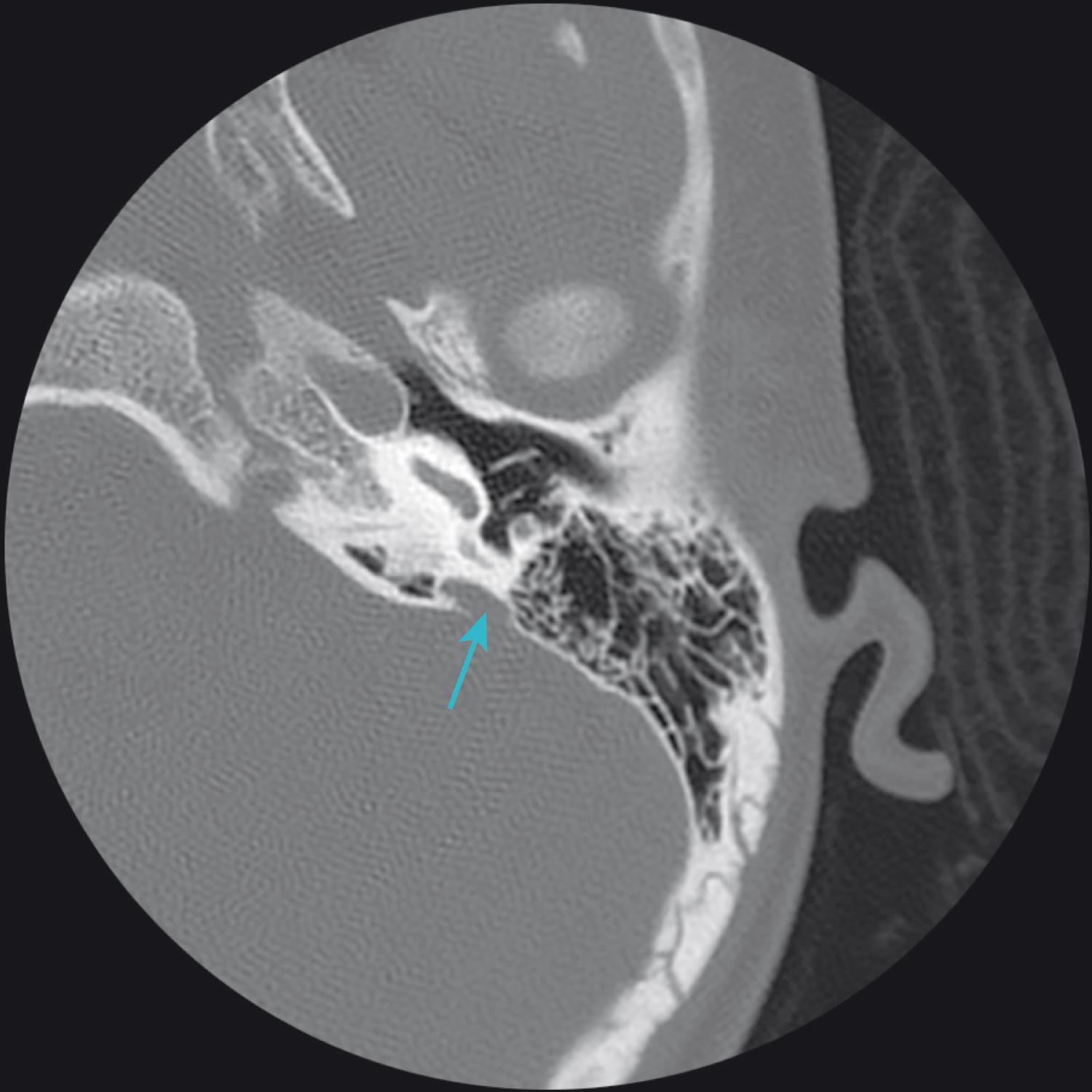Physical Address
304 North Cardinal St.
Dorchester Center, MA 02124
Drs. Donald B. Kamerer, Arpita I. Mehta, and Yael Raz are acknowledged for their contributions to the previous editions. In addition, Dr. Barton Branstetter is recognized for generously sharing radiographic images of middle ear malformations.
Congenital anomalies of the ear are estimated to occur in 1 in 11,000 to 15,000 patients. Isolated middle ear anomalies with a normal pinna and external ear canal account for a fraction of these anomalies, whereas approximately one-fourth of congenital middle ear anomalies are associated with syndromes.
Congenital malformations of the middle ear are usually encountered in two situations. First, these may be suspected when a child has an unknown cause of conductive hearing loss not attributable to otitis media or trauma. The otoscopic examination or computed tomography (CT) scan may help to identify the malformation, and the findings are confirmed at the time of surgery.
The otologic surgeon may also encounter middle ear malformations incidentally during tympanoplasty or middle ear exploration for stapes surgery. Regardless, the surgeon has to be aware of the various potential anomalies and management options when these anomalies are encountered.
Middle ear malformations should always remain in the differential diagnosis in children with conductive or mixed hearing loss.
An incidental encounter with a congenital middle ear malformation may occur during any otologic surgery.
A CT scan should be obtained in pediatric patients with conductive hearing loss not associated with otitis media.
Inner ear causes of conductive hearing loss such as superior semicircular canal dehiscence, large vestibular aqueduct, and large internal auditory canals should be evaluated prior to middle ear surgery.
The surgeon should be familiar with various reconstructive methods and verify their availability prior to surgery.
An aberrant facial nerve may be associated with anomalies of the middle ear, and the surgeon has to be vigilant to recognize this possibility to avoid injury.
History of present illness involves a comprehensive otologic history. For infants, the newborn hearing screen may help initially to identify congenital conductive hearing loss. For older children and adults, the duration of the hearing loss is important. Congenital hearing loss is suspected when hearing loss has been present since childhood.
Otologic history: otalgia, otorrhea, tinnitus, vertigo
History of prior otologic surgery
Family history of hearing loss and surgery to improve hearing
Social and developmental history: impact of hearing loss on speech and language development and performance in school
Review of systems may reveal ophthalmologic, cardiac, renal, or other medical problems suggestive of a syndromic diagnosis.
Other craniofacial anomalies that may make congenital ear anomalies more likely
Abnormalities of the pinna or preauricular skin tags or pits
Branchial arch anomalies, such as defects of the mandibular arch (e.g., Treacher Collins syndrome). These findings also may predict difficulties in securing the airway during anesthesia.
The external auditory canal must be evaluated to determine adequacy for exposure and visualization during surgery.
The tympanic membrane should be examined for any apparent middle ear anomalies, such as vascular defects or anomalies of the malleus.
Tuning fork testing should be performed to establish consistency with audiologic testing.
CT of the temporal bone is indicated when conductive hearing loss is present and not attributable to otitis media in a pediatric patient. Careful evaluation of the temporal bone may determine the etiology of the hearing loss. In addition, inner ear causes of conductive hearing loss may be identified. For example, semicircular canal dehiscence or dilatation of the internal auditory canal with X-linked gusher syndrome may result in nonsurgically reparable conductive hearing loss. Mutations in the gene encoding the POU3F4 transcription factor have been implicated in at least one form of X-linked progressive mixed hearing loss. Perilymph gusher may occur with opening of the footplate. This is thought to be secondary to patent cochlear aqueduct or a defect in the lateral end of the dilated internal auditory canal. Superior canal dehiscence syndrome and a large vestibular aqueduct may also be an inner ear cause of conductive hearing loss ( Fig. 204.1 ). The conductive loss is thought to be secondary to the third window phenomenon. Surgery is not indicated in these cases.

CT images should be examined carefully for abnormalities of the ossicular chain and to assess for an aberrant course of the facial nerve.
Middle ear exploration is indicated when a patient presents with conductive hearing loss without an identifiable etiology on physical examination or CT.
CT finding that may account for the hearing loss and is amenable to reconstruction
Medical comorbidities that will increase the risks of general anesthesia
Only hearing ear
Vascular anomaly that may not be surgically correctable or increases the risk of vascular trauma
Otitis-prone child
Inner ear causes for conductive or mixed hearing loss. Surgery may increase the risk of perilymphatic gusher.
Audiogram to determine baseline hearing. Testing may be challenging in a pediatric patient. Conductive hearing loss is common in children, secondary to otitis media. It is important to confirm that the air-bone gap closes after the middle ear aerates in these children to rule out congenital middle ear anomalies that are accounting for the hearing loss. Tympanometry should also be considered in children to help to confirm otoscopic findings.
Become a Clinical Tree membership for Full access and enjoy Unlimited articles
If you are a member. Log in here